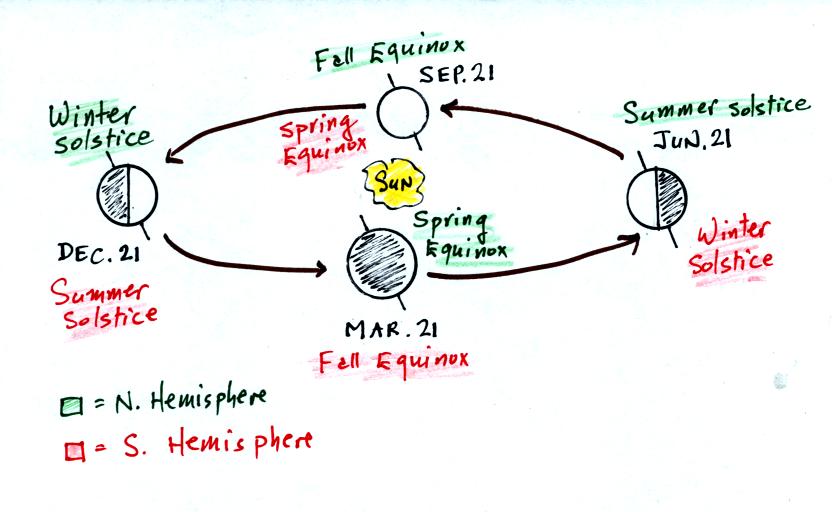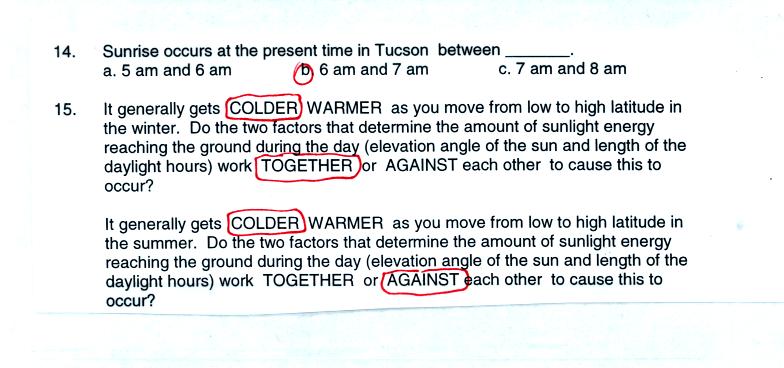Optional Assignment #2
Answers

There is 24 hours of night at the N. Pole in both figures.
That's what tells you this is the N. Hemisphere winter solstice.
The next figure explains why the earth might appear tilted to the left
or the right on the winter solstice.

In one case you are standing at Position A and looking at the earth as
it orbits the sun. If you were to move to Position B and look
back at the earth it would appear to be tilted to the right.

As the figure below shows, the fall equinox occurs on Sept. 21 in the
N. Hemisphere and on Mar. 21 in the S. Hemisphere.

Names for the N. Hemisphere are given in green, the names for the S.
Hemisphere are given in red.

The best way to try to answer a question like this is to start with
what you know. The sun is overhead at noon on the equinoxes at
the equator. It is overhead at 23.5 N latitude on June 21 and at
23.5 S latitude on Dec. 21. Plot these points on a graph and
connect them with a line.

The sun appears overhead at noon sometime during the year only in the
narrow band between 23.5 S and 23.5 N latitudes.

The sun path diagrams for Tucson and Minneapolis for the summer and
winter solstices are shown below (these were the photocopied class
notes).



As the following figure shows, the sun will be above the southern
horizon at solar noon. Shadows cast by objects on the ground will
point north.


Refer back to the Answer for Question #5. In the winter the days
are shorter and the sun is lower in the sky in Minneapolis than in
Tucson. Both factors work to reduce the amount of sunlight energy
reaching the ground in Minneapolis, so Minneapolis is colder than
Tucson. In the summer the days are longer (works to increase
amount of energy) but the sun is lower in the sky (reduces amount of
energy). The 2nd factor is dominant and less energy reaches the
ground in Minneapolis than in Tucson.


On Mar. 21 (spring equinox) the days will be 12 hours long. Jun
21 is the longest day of the year, so the days are longer than 12 hours
and getting longer between Mar. 21 and Jun. 21. Between Jun 21
and Sep. 21 the days are more than 12 hours but getting shorter.
The days are again 12 hours long on Sep. 21, the fall equinox.
Between Sep. 21 and Mar. 21 the days are less than 12 hours long.

In Question #19, the days are 12 hours long at the equator (that is
always true) and 24 hours long north of the Arctic circle. So the
days get longer as you move from the equator toward the N. Pole.

A typographical error caused some confusion on this problem.















